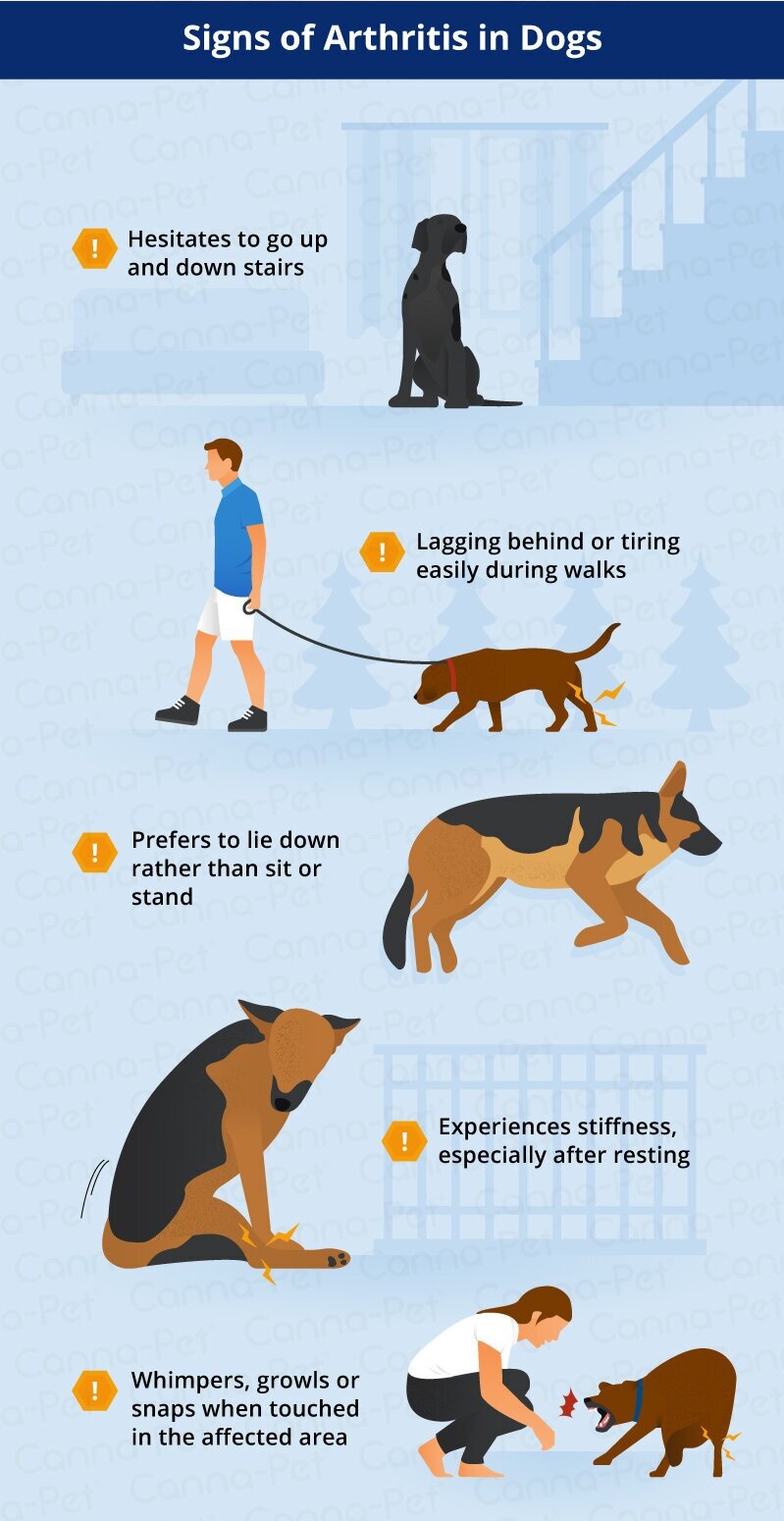Arthritis in Senior Dogs
Arthritis is one of the most common ailments seen in middle-aged to senior dogs. However, even younger dogs can suffer from arthritic changes to their joints that are as painful as they are debilitating.
Unfortunately, most dog owners and veterinarians often miss the early warning signs of arthritis because dogs tend to hide their soreness and discomfort until the changes are severe.
With that in mind, the seven most common signs of arthritis are:
Limping
Your dog may limp or favor one or more of his legs, depending on which legs and joints are affected. In some cases, his limp may be worse when he wakes in the morning and become less noticeable as he “warms up” by moving around.
Difficulty moving
He may be reluctant to do things that were easy for him before such as going up and down the stairs, getting into and out of the car and climbing up onto the couch or bed.
Spinal issues
Not only do arthritic changes occur in your dog’s legs but also in various parts of his spine. These changes may result in a sore neck, abnormal posture with a visible “hunch” in his back or lameness in one or both of his hind legs.
Tiredness
He may tire more easily, making his walks shorter as they become more painful while he spends an increased amount of time resting and/or sleeping.
Irritability
Your dog may be uncharacteristically irritable, snapping and/or biting when touched or petted if this increases his pain.
Atrophied muscles
His muscles may atrophy due to inactivity and a decrease in their use. An arthritic dog with atrophied or withered leg muscles will have legs that look thinner than normal legs.
Licking, chewing or biting
He may start to lick, chew or bite at the parts of his body that hurt, often leading to inflamed skin and hair loss in those areas.
While arthritis itself can’t be cured or reversed, your dog’s pain can be managed, his mobility increased, and his quality of life greatly improved. The first step is to have him thoroughly examined by your vet (including blood work, x-rays and other diagnostic tests if needed) followed by your working together on a treatment plan for him.
Fortunately, there are numerous non-surgical options to treat mild, moderate and even severe cases of arthritis. Key, however, to any plan is a weight loss (then maintenance) diet and a regular exercise regime. But your vet may begin immediately by prescribing nonsteroidal anti-inflammatory drugs (NSAIDS) to reduce the pain and inflammation in your dog’s affected joints.
In addition, your vet may suggest: the use of glucosamine, chondroitin sulfate and/or omega-3 fatty acid supplements that support joint health; cortisone, visco-supplementation, glycosaminoglycan or steroid injections; and one or more of these therapies -- physiotherapy, hydrotherapy, acupuncture, ultrasound therapy, laser therapy, and magnetic therapy.
For your part, alleviate some of your cherished pet’s painful joint stiffness by providing him with low and soft, cushioned resting and sleeping surfaces to keep him off all hard floor surfaces while keeping him comfortable and warm.
Written by Nomi Berger


